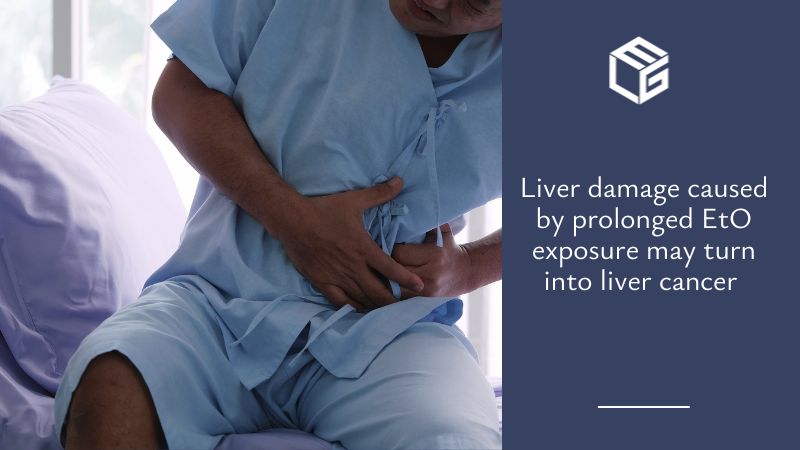-
About »
- Insulin MDL
-
Cases »
- Diseases
- Testimonials
- Government
- Contact
- Get Help Now
-

Over the years, scientists have conducted studies that reveal how ethylene oxide exposure may contribute to elevating the risk of developing liver cancer. Today, numerous individuals who were diagnosed with liver cancer are filing lawsuits against negligent companies emitting EtO gases.
If you were exposed to EtO either through occupational exposure or proximity to EtO-using facilities, you might qualify for a toxic exposure claim. Do note that an EtO claim for liver cancer is limited to younger individuals and non/light drinkers.
Claim ApplicationA study involving the adult U.S. population suggests a connection between exposure to ethylene oxide and liver damage. For victims, the liver damage caused by prolonged EtO exposure may worsen and turn into liver cancer over time.
The National Cancer Institute lists the following as signs and symptoms of liver cancer:
Many establishments utilize EtO as a pesticide or a sterilizing agent. People who have a greater likelihood of toxic exposure are EtO facility workers and residents with homes near EtO-emitting facilities.
If you are one of these people and you’ve recently received a liver cancer diagnosis, you might be entitled to monetary compensation. In addition, bereaved family members of deceased victims may also qualify for a claim.
It must be noted that filing an EtO-related claim for liver cancer is limited to the following:
Receiving a liver cancer diagnosis can be surprising, especially when you are not a heavy drinker or are a young individual with no other risk factors to develop such a severe illness. Know that EtO exposure is preventable, so if negligence leads to your disease, you may be entitled to legal compensation.
Talk to our experienced Ethylen oxide exposure lawyers at ELG Law to learn if you qualify for an EtO-related claim. We’ll need your medical documents and employment or residential records to start. If you are eligible, we can begin filing your claim.